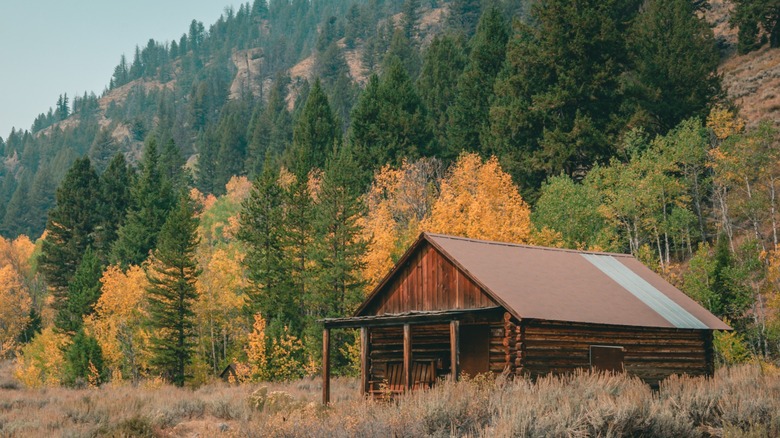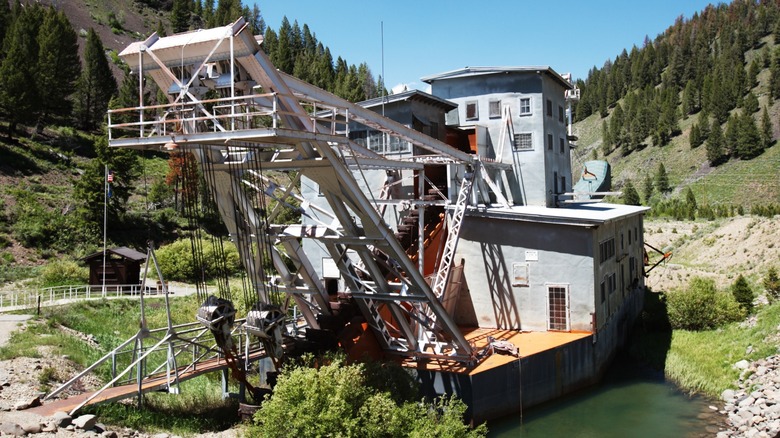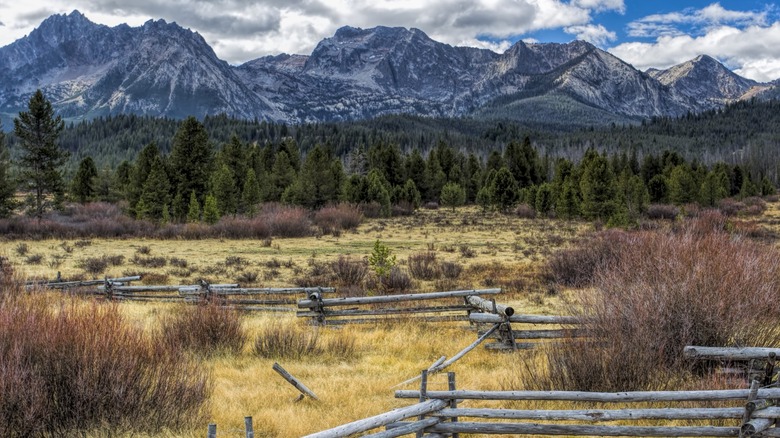The Wild West Meets Ghostly Charm In An Abandoned Idaho Town With Timeless Beauty
About nine miles down a small forest road, between Stanley and Challis in central Idaho, lies the old mining town of Custer. It is nestled in thick swathes of Challis National Forest evergreens and surrounded by the Pioneer Mountains and Sawtooth range, the awe-inspiring Idaho mountains southwest of the town. In its heyday, Custer's population swelled to around 600 people — but now it lies empty, the houses abandoned, and the equipment rusted and in disrepair. Custer now holds no residents, only history — and here, in this charming ghost town, you can learn about the trials and tribulations of those who yearned for fortune during the Gold Rush years.
As you wander down the road of this one-street town, you'll see the welcoming white façade of the Empire Saloon, which beckoned weary miners inside to either drown their sorrows or celebrate their good luck with hard spirits — but libations are no longer served at this establishment, only souvenirs to help visitors remember a bygone era. A poker table can also be seen, riddled with bullets from an unknown dispute — a sobering reminder that this was the Wild West: The work was hard, the future uncertain, and tempers flared hot.
In the center of Custer, you'll find the large, high-ceilinged sunny schoolhouse, where children gathered to learn while their parents toiled at home or in the mines. The building also served as a social and spiritual meeting place for the town's adults — anything from worship services to dances were held within these four wooden walls. These Saturday night events were highly anticipated and attracted attendees from far and wide, who came by wagon, horse, or on foot to eat, drink, socialize, and dance until the wee hours of the morning.
The rise and fall of Custer
Custer was birthed from the various mineral rushes of the 1800s. A gold vein was discovered near the Yankee Fork River in 1876, leading to an influx of prospectors to the area. Subsequently, the General Custer mine was set up, along with the town of Bonanza to handle the new arrivals. As more minerals were discovered, the establishment of mines continued, including the lucrative Lucky Boy and Black mines, which produced gold, silver, copper, and lead. More mines led to more people looking for wealth, and soon another town was needed to support the number of settlers. Custer, just two miles from Bonanza, was thereby founded in 1879. Like most mining settlements, the town grew rapidly, and soon there were boarding houses, supply stores, restaurants, and the aforementioned saloon and schoolhouse. A Chinatown was even set up by former workers on the Trans-Continental Railroad, who also came here seeking prosperity.
Life in Custer at this time was challenging. The work was dangerous yet tedious, with miners prone to injury and accidents. Idaho winters were harsh and frigid, lasting from about October till May, and avalanches weren't uncommon in this mountain valley town (which sits at 6,470 feet above sea level). In fact, if you visit the Custer Cemetery, you'll see that some of the grave markers list the cause of death as "snowslide". In the summer, grass fires were a problem; a particularly ferocious one destroyed neighboring Bonanza and caused most of its residents to move to Custer.
By 1904, the gold veins had been tapped dry, and most of the mines had ceased operations. While a few residents stayed on after their closure, the last of them left in 1910, when Custer was officially designated a ghost town.
Planning your visit to Custer ghost town
The Challis National Forest Service took over ownership of the town in the sixties, and then, in 1981, Custer became a designated historic site, leading to its restoration and revival as a tourist attraction. Now visitors can take a journey back in time, experiencing a small taste of what life was like for a settler in the Wild West.
Custer is about 3.5 hours northeast of the capital, Boise, the wildly underrated "City of Trees." If you're driving from Stanley or Challis, you'll need to take Highway 75. Head toward Sunbeam Dam overlook and then turn onto Forest Road #013 to reach the town. In the summer months, between Memorial Day (the last Monday in May) and Labor Day (the first Monday of September), guided and self-guided walking tours are available during business hours. These are free of charge and are highly recommended to gain a better understanding of the town and its history. The site is open year-round and there is no admission fee. Just three minutes away is the Yankee Fork Gold Dredge, which is also worth a visit (entry is $5 for adults).
If you are planning to explore the town during the winter, be aware that the forest road may be impassable after heavy snowfall. Alpinists may want to include a stop at Galena Lodge, a charming spot nestled in the Boulder Mountains with excellent Nordic (cross-country) skiing and snowshoeing trails about an hour and a half south of Custer. Or you can continue another 30 minutes further south to the famed Sun Valley Resort, a snowy playground offering world-class skiing and snowboarding for all levels.


